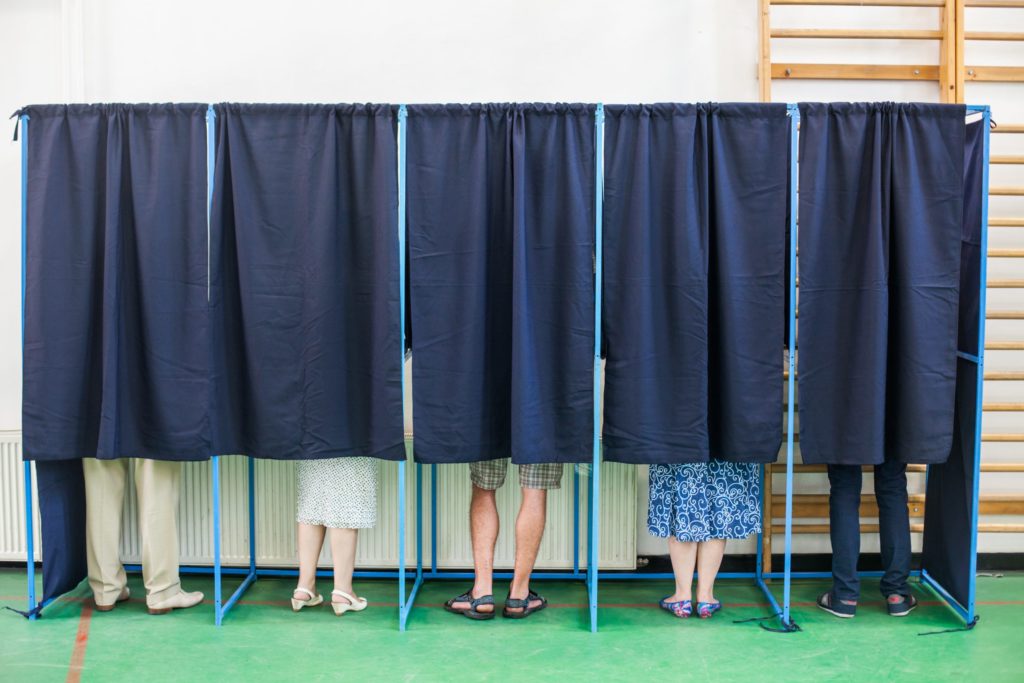Patent policy is important for innovation
While much of Washington is focused on federal spending and the ongoing debate over vaccine mandates, the Senate recently held a hearing on Kathi Vidal, who has been nominated to be director of the U.S. Patent and Trademark Office (USPTO). Though lacking the hype of government shutdowns and new strains of COVID-19, the USPTO appointment plays a critical role in innovation policy and economic growth, and if approved, there will be no shortage of issues awaiting Vidal as the new director.
Ideally, granting patents spurs invention, which, in turn, boosts innovation and ultimately economic growth. Yet getting patent policy right can be a challenge. Consider, for example, that a smartphone may include more than 250,000 patents that inventors need to navigate in order to build a better smartphone. If too many patents are approved, innovation may be thwarted and those same patents may impede those trying to create something new or improve upon an existing product. But if too few patents are approved, inventors will claim that innovating and filing a patent will not allow them to recoup their costs.
To date, the United States has issued a staggering number of patents—and the pace has increased in recent years. In fact, this spring the USPTO celebrated issuing its 11 millionth patent. In 2020, the USPTO granted 388,900 patents—more than double the number of patents issued in 2000. Unfortunately, this massive increase in patents has not been accompanied by a commensurate increase in innovation. But it has left patent examiners struggling to maintain the pace. Researchers found that, on average, patent examiners have roughly 19 hours to process a patent application.
This makes it difficult to ensure the quality of the patents that are issued; inevitably, poor quality patents or overly broad ones make their way into the system. These patents are more of an impediment than a spur to innovation. Low quality patents with ill-defined claims make it difficult for inventors to determine where an infringement begins. This has led to the rise of “patent assertion authorities,” (PAEs) that amass large portfolios of patents not to invent, but to litigate and sue inventors who may have infringed upon an existing patent. A 2016 Federal Trade Commission study found that such PAEs, which collect potentially hundreds of thousands of patents, accounted for $3.2 billion in reported revenue. Typically, these cases do not go to trial, but are settled as an alternative to a lengthy litigation process. In other words, PAEs wield the threat of a costly and lengthy trial as a means to extract a settlement from inventors who lack the resources to engage in litigation.
The Supreme Court recognized such problems in a series of decisions aimed at narrowing what is eligible to patent. Congress also acknowledged such issues when it passed the America Invents Act (AIA) in 2011. The legislation created the Patent Trial and Appeal Board (PTAB) at the USPTO to conduct an expedited inter partes review (IPR) as a low-cost and timelier alternative to costly litigation for ridding the system of poor quality and invalid patents.
To be effective, the USPTO must also recognize the problem and establish effective ground rules for improving the IPR process. Unfortunately, the previous patent director, Andrei Iancu, implemented some fundamental PTAB changes, narrowing the scope and applicability of the IPR process. Iancu increased the use of discretionary denials, which eliminated access to IPR, denying petitions before the merits were even reviewed. Through guidance, precedential decisions and USPTO policy, former director Iancu restricted the use of PTAB, redefining the intent of the America Invents Act. By limiting PTAB’s reach, these changes make litigation—a much costlier endeavor—the only avenue for addressing low quality or bad patents.
Clearly the new director has some important issues to address. First, improving the quality of the patent review process is critical. Providing additional resources and training for examiners to improve the quality of patents they issue will help address this problem. Likewise, adding more examiners may also ease the burden on existing staff. Second, the new director should address the problems that have limited the scope and access to the IPR process, walking back some of the restraints imposed by the last director. Finally, the new director should look to improve USPTO policies to ensure the quality of patents the agency issues. The patent reform debate continues in Congress with competing legislation to restore or eviscerate the AIA. The issue remains live, and leadership at the USPTO will be critical for charting the course for patent reform to further spur innovation and economic growth around the country.
Image credit: Olivier Le Moal









